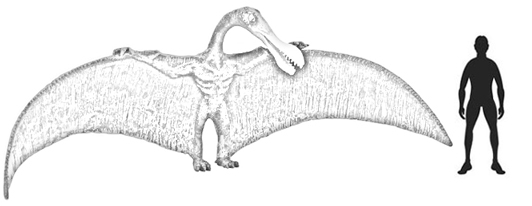Pterosaurs and More Pterosaurs
Illustrating Ornithocheirus
We seem to be having a run of Pterosauria based articles at the moment. No sooner has Sir David Attenborough discussed the Azhdarchidae, specifically Quetzalcoatlus northropi in his Radio 4 programme “Life Stories” and we review it, then we are asked to prepare an illustration of another pterosaur for an Everything Dinosaur fact sheet.
Ornithocheirus
This time we are concentrating on another large pterosaur but one from earlier in the Cretaceous then the azhdarchids such as Quetzalcoatlus and Hatzegopteryx. We are working on a Ornithocheirus (O. mesembrinus) fact sheet to accompany the soon to be introduced CollectA Ornithocheirus model. The difficulty with this particular branch of the pterosaur family tree is firstly to identify what do we actually mean by Ornithocheirus. The pterosaur family known as Ornithocheiridae was first described by Harry Govier Seeley in 1870. Seeley a former student of Sir Richard Owen, studied a number of pterosaur fossils found on the Isle of Wight and elsewhere in southern England. He erected the Ornithocheiridae family as part of his attempts to classify the very fragmentary, and in many cases very worn pterosaur fossils he was working with.
As far as we know, he was the first academic to publish a book for popular consumption solely devoted to the Pterosauria – “Dragons in the Air” published in 1901.
The ornithocheirid pterosaurs appear to have had an almost world-wide distribution and it is quite likely that other fragmentary pterosaur fossils from South America, England, Africa and Australia will be assigned to this family. It is equally likely that many fossils at the moment ascribed to Ornithocheirus species will be re-classified as more complete fossils are found.
From “Walking with Dinosaurs”
Thanks to the ground breaking documentary series “Walking with Dinosaurs”, in which an Ornithocheirus was strongly featured, many people assume this was the largest flying animal of all time. Indeed, large specimens ascribed to this genus have been discovered in Brazil, but most scientists do not believe that these creatures had wingspans in excess of 11 metres as seen in the television programme. One of the largest species known at present O. mesembrinus, the species we are basing our fact sheet on probably had a wingspan no more than six metres long – still very impressive though.
The Everything Dinosaur Scale Drawing of Ornithocheirus (O. mesembrinus)
Picture credit: Everything Dinosaur
This new model should be with us shortly, it will be coloured black and the model will give the impression of being covered in fair, downy hair in recognition of fossil evidence and an indication that these creatures were indeed warm-blooded; why have insulating body hair if you are cold-blooded? The black body colouration is based on the fact that dark colours absorb heat more quickly and do not reflect as much into the air, so if this animal needed to keep itself warm, being coloured black would have been useful.
To view the rest of the CollectA model range (pterosaur models) and other dinosaur replicas: CollectA Age of Dinosaurs Prehistoric Life Models.


